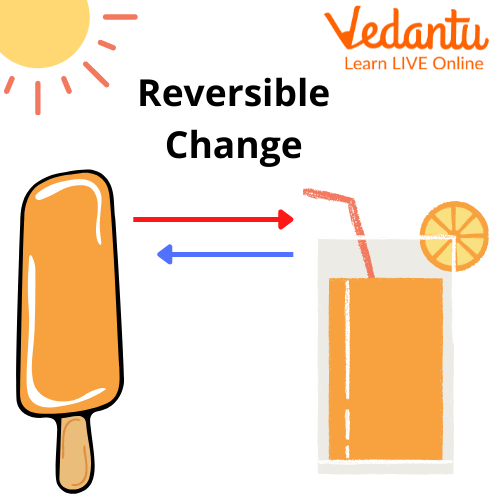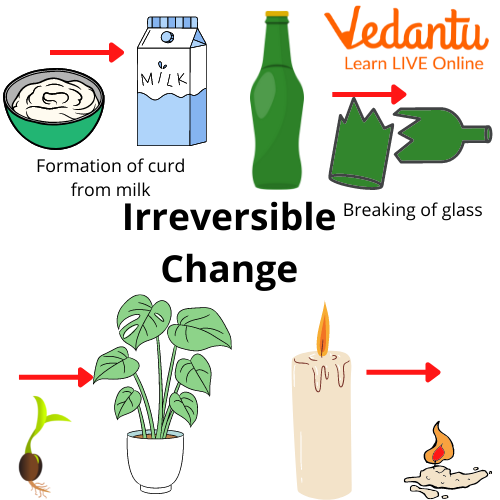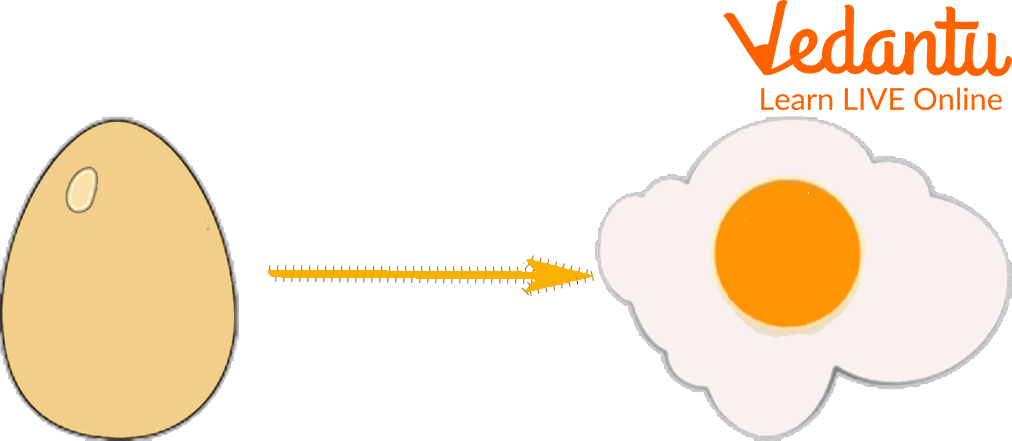




Key Differences Between Reversible and Irreversible Changes
Changes are the only constant thing around us. Changes can happen to both living and non-living things. The changes that happen around us can sometimes be reversible and sometimes irreversible. In simple terms, reversible changes are changes that can never be changed, undone, or reversed.

Reversible Changes Examples with Pictures
On the other hand, irreversible changes are the changes that cannot be changed or reversed, once it is done. An example of reversible change is the heating and cooling of water. There are many other reversible change examples like melting and boiling. Now we will get to know what is reversible change. There are many more reversible change examples.
What is a Reversible Change?
At the point when water is heated and cooled it goes through a process of reversible changes. Water in its solid state is called ice. At the point when ice is heated, it melts and becomes fluid water. Further heating makes the fluid change to a gas, called water vapour. At the point when the water vapour is cooled, it changes back to fluid water. Now it is clear what is a reversible change. Two examples of reversible change include evaporation and freezing.

Reversible Change
Further cooling will make the fluid water freeze into ice. This is an example of reversible change with the picture. Plastic is a material that can be made into practically any shape by warming it at a high temperature. Hence, these are two examples of reversible change.
What is an Irreversible Change?
At the point when food is prepared, it goes through an irreversible change. At the point when an egg is boiled, it is as yet an egg, however, its attributes like the surface, shape, smell, and appearance are changed. Due to the heat, the egg has achieved an irreversible change.

Irreversible Change
We cannot change this boiled egg back into the unboiled one. This is an example of irreversible change. So, irreversible change is the process in which we cannot get the original substance back. New substances are always formed in irreversible change. Newly formed materials are always useful to us. This is an example of irreversible change in the picture.

Irreversible Changes Examples with Pictures
Reversible and Irreversible Change Mixture
Combining at least two substances as one can make them change, and at times another substance is delivered, thus, a portion of these processes is reversible while others are irreversible. A reversible mixture is the expansion of sugar to water. Sugar crystals dissolve, or fall to pieces when blended into the water.
Assuming that this combination is warmed, the water evaporates, leaving the sugar crystals below. An irreversible mixture is a concrete powder and water. This mix brings about a hard strong, and it can't be changed back. This is an Example. Examples of reversible change and irreversible change are mentioned.
Difference Between Reversible and Irreversible Processes
The following are the differences between reversible and irreversible processes.
Summary
There are different types of changes that we can observe. Plastic goes through a reversible change when it is reused. Its unique shape, for example, a water bottle or a food storage holder, can be changed and made into a novel, a new thing. Reused plastic can be transformed into clothing, outdoor furniture, or playground materials.
The reused plastic can similarly be turned around into another water jug or a holder. One of the simplest types of change is the difference in shapes. A few solids, like clay, can be formed into various structures and can be remoulded once more into their unique shapes. Such materials might be twisted, crushed, bent, or extended.
FAQs on Reversible and Irreversible Changes Explained
1. Why is cooking an irreversible change?
The cooking of food is an irreversible change as the ingredients used in the cooking of food cannot be obtained back. For example - it is impossible to turn a boiled or cooked egg into a raw egg.
2. What are chemical changes?
The ingredients like flour, butter, eggs, and sugar are utilised to make a cake. They change when they are blended and heated. The heat causes another substance of cake to be made, and there is no hope to change a cake once more into its ingredients. The changes in cake combinations are not simply achieved by blending or heating. Chemical changes additionally happen. Materials, like egg and flour, are made up of chemicals that change to create another substance — in this situation, cake. It is an irreversible change.
3. Is boiling water reversible or irreversible?
Boiling of water forms steam which can be further condensed to form water again, thus this change is a temporary and reversible change. During boiling water forms steam (water) and thus there is no new substance formation. The chemical composition and properties of the original substance (water) are not changed.
4. Which of the following is a reversible change: melting of ice or burning of wood?
The melting of ice is a reversible change because it can be frozen again as it was before.
5. What is an irreversible change? Explain it with an example.
A change that cannot happen backward that cannot be reversed is called an irreversible change. They are those changes where material cannot be changed back into its original form.
Burning- Once something is burnt, it cannot be brought into its original form. It can’t become unburnt. Once a piece of paper has been burnt, it can’t be used to write or read anymore.
6. Is rusting an irreversible change?
Yes, rusting is an irreversible change.
Rusting- Once iron is rusted, it cannot be brought into its original form. The rusted part cannot be sanded off, and the underside can be re-shined, but the iron will eventually thin out if this continues.























